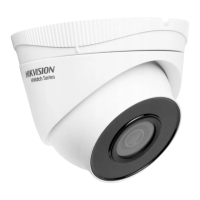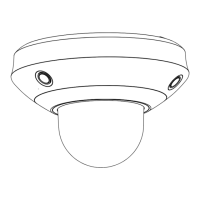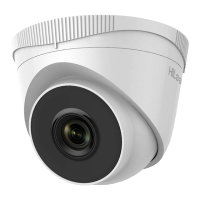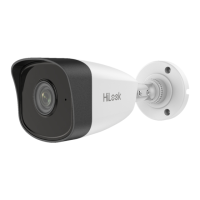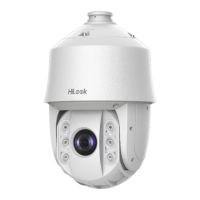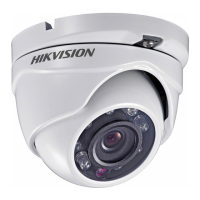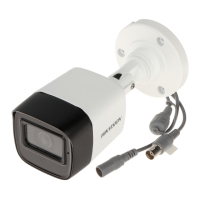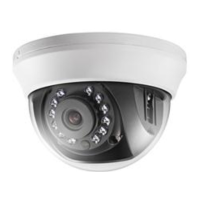Do you have a question about the HIKVISION HiWatch Series and is the answer not in the manual?
| Brand | HIKVISION |
|---|---|
| Model | HiWatch Series |
| Category | Security Camera |
| Language | English |
Description of the front panel components and indicators.
Instructions for operating the DVR using the IR remote control.
How to use a USB mouse for DVR control.
Explanation of the soft keyboard input methods.
Description of the rear panel connectors and ports.
Proper procedures for starting up and shutting down the DVR.
Process for activating the device and setting an admin password.
Using an unlock pattern for secure device login.
Initial device setup through the startup wizard.
Procedures for logging into and out of the DVR.
Steps to reset the admin password using a GUID file.
Guide to adding and connecting IP cameras to the DVR.
Setting up analog and IP signal input types for channels.
Enabling 5 MP long distance transmission for specific DVR models.
Overview of the live view mode and its icons.
Various functions and operations available in live view.
Reducing bandwidth for remote viewing without affecting image quality.
Customizing live view display settings like output, dwell time, and audio.
Manually diagnosing video quality for analog channels.
Setting up parameters for PTZ camera control.
Configuring camera presets, patrols, and patterns for PTZ.
Accessing and using the PTZ control panel interface.
Setting video encoding parameters for main and sub streams.
Setting up schedules for recording and capture events.
Setting up motion detection parameters and actions.
Configuring recording and capture triggered by alarm inputs.
Configuring recording and capture for various VCA and motion events.
Setting up manual and continuous recording modes.
Setting up recording schedules for holidays.
Enabling redundant recording for enhanced data safety.
Grouping HDDs to manage storage for specific channels.
Locking recorded files or setting HDD to read-only.
Enabling or disabling H.264+/H.265+ for analog cameras with one click.
Enabling 1080P Lite mode for real-time encoding resolution.
Methods for playing back recorded video files.
Playing back recorded video of a specific channel instantly.
Searching and playing back video files by normal search criteria.
Searching and playing back files based on event types like motion or alarm.
Searching and playing back files using video tags.
Using smart playback to efficiently review video with motion or VCA events.
Playing back record files associated with system log entries.
Playing video files in multiple sub-periods simultaneously.
Looking up and playing back files from external devices.
Additional functions to assist with playback operations.
Playing video files frame by frame to check details.
Zooming in on the image to view details during playback.
Playing back multi-channel recordings in reverse.
Managing video clips, locked files, and tags during playback.
Methods for backing up record files to external devices.
Backing up files found via normal video/picture search.
Backing up event-related record files.
Exporting video clips directly during playback.
Managing backup devices like USB flash drives and HDDs.
Configuring motion detection parameters and response actions.
Configuring PIR alarm for analog cameras with false alarm filtering.
Setting up handling methods for external sensor alarms.
Detecting video loss on a channel and configuring alarm actions.
Detecting video tampering and configuring alarm response actions.
Configuring continuous video quality diagnostics and linkage actions.
Configuring handling methods for various system exceptions.
Defining actions to be taken when an alarm or exception occurs.
Configuring face detection parameters and actions.
Configuring vehicle detection for traffic monitoring and license plate capture.
Detecting objects crossing a set virtual line and configuring alarm actions.
Detecting objects entering or loitering in a defined virtual region.
Detecting objects entering a predefined virtual region from outside.
Detecting objects exiting a predefined virtual region.
Detecting objects loitering in a predefined virtual region for a certain time.
Detecting when people gather in a predefined virtual region.
Detecting people or objects moving fast in a predefined virtual region.
Detecting illegal parking in specific areas.
Detecting unattended objects left in predefined regions.
Detecting objects removed from a predefined region.
Detecting abnormal sounds like sudden increase/decrease in sound intensity.
Detecting image blur caused by lens defocus.
Detecting changes in the surveillance environment.
Triggering alarm when an intruder moves within the detector's field of view.
Searching for captured face pictures and related video files.
Analyzing and searching for suspicious behavior based on VCA detection.
Searching for captured vehicle plate pictures and related information.
Calculating and reporting the number of people entering or leaving an area.
Graphical representation of data using colors to analyze visit times and dwell times.
Configuring basic network parameters like IP address and DNS.
Setting up advanced network features like PPPoE and Guarding Vision.
Enabling and configuring PPPoE for network access.
Enabling Guarding Vision for mobile and remote access.
Setting up Dynamic DNS for network access.
Configuring the Network Time Protocol server for accurate system time.
Enabling and configuring Network Address Translation (NAT) settings.
Configuring remote alarm host, ports, and bandwidth limits.
Setting up the HTTPS port for secure web communication.
Configuring email notifications for events and alarms.
Monitoring real-time network traffic information.
Diagnosing network connection status including delay and packet loss.
Testing network delay and packet loss for connectivity.
Exporting captured network data packets to backup devices.
Checking the current network status and parameters.
Viewing real-time network statistics of the device.
Initializing newly installed hard disk drives before use.
Adding and managing NAS or IP SAN disks as network HDDs.
Managing HDDs by grouping them for specific channel recording.
Steps to set up HDD groups for organized storage.
Setting HDD property to redundancy, read-only, or read/write.
Allocating storage quota for recorded files per camera.
Setting up cloud storage for uploading and downloading recorded files.
Cloning HDD data to an eSATA disk for backup.
Checking the status of installed HDDs for potential failures.
Viewing S.M.A.R.T. information for HDD reliability monitoring.
Detecting bad sectors on the HDD to check its status.
Configuring alarms for HDD errors like uninitialized or abnormal status.
Configuring On-Screen Display settings like date/time and camera name.
Setting up privacy mask zones to hide specific areas from view.
Adjusting video parameters like brightness, contrast, and sharpness.
Adjusting image parameters for analog and IP cameras.
Configuring camera-specific parameters like defog and WDR.
Checking the device's system information.
Viewing and exporting DVR operation, alarm, and exception logs.
Importing and exporting IP camera information via Excel files.
Backing up and restoring DVR configuration files.
Upgrading the DVR firmware via local backup or FTP.
Procedure for upgrading firmware using a local backup device.
Procedure for upgrading firmware via FTP server.
Upgrading firmware for multiple connected analog cameras simultaneously.
Restoring DVR settings to factory defaults.
Configuring output resolution, system time, and mouse pointer speed.
Setting up Daylight Saving Time adjustments.
Configuring device name, auto logout, and CVBS output brightness.
Adding, deleting, and editing user accounts and permissions.
Steps to add a new user account.
Procedure to delete an existing user account.
Modifying user account parameters and permissions.
Definitions of technical terms used in the manual.
Solutions for common problems like no image display or HDD issues.
